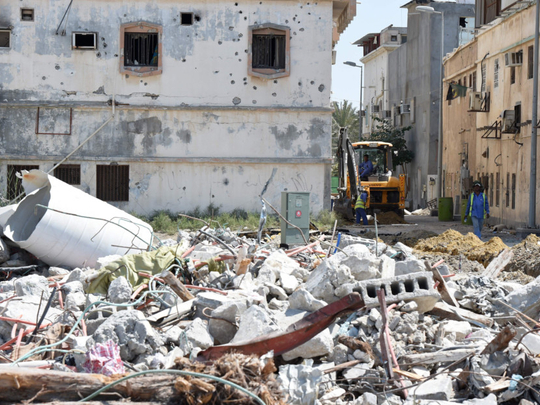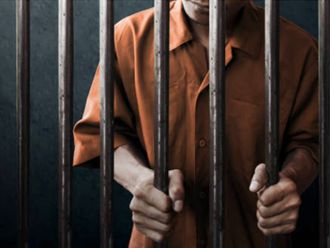
Awamiya: Posters of sumptuous villas and palm-fringed boulevards hang in the battle-scarred old quarter of Awamiya.
The latest wave of violence erupted in the summer when authorities began tearing down the neighbourhood of Musawara, a walled area dating back to the Ottoman Empire, saying its labyrinthine streets and maze-like structures had become a breeding ground for terrorists.
The demolitions prompted anti-government militants to clash with government forces which turned the town into a war zone.
The outer walls of buildings and mosques are constellations of bullet holes. Mangled carcasses of burnt-out cars lay strewn across its once-vibrant streets. Broken roller shutters expose mouldering jars of jam and cookies in a scorched grocery store.
A government official who gave AFP a rare tour of Musawara drew a triangle in the sand with a twig to describe the fighting.
“Terrorists,” he said, pointing at the apex of the triangle and “government forces” at the base.
“In between, house, house, house,” he said, explaining how pitched battles between the opposing sides wrought destruction on the neighbourhood.
In August, the government announced the end of a three-month campaign to flush out gunmen from Musawara.
“This is not a Shiite-Sunni problem; this is a terrorist problem,” the official said, revealing a cell phone image of a bullet-ridden government bulldozer targeted by snipers in the neighbourhood.
“We target anyone who is dangerous for the country — Shiite or Sunni.”
Awamiya, a town of around 25,000 people, has seen bouts of unrest since 2011 when anti-goverment protests erupted.
Saudi Arabia’s Shiite community makes up an estimated 10 to 15 per cent of the country’s population of 32 million.
Awamiya was also home to Nimr Al Nimr, a fiery Shiite cleric and government critic who was executed last year on terrorism charges, sparking widespread outrage and leading to renewed tensions with regional rival Iran.
“We hope Awamiya will be restored to its former glory,” said Mohammed Ali Al Shoyoukh, an elderly resident who recently returned to the area after the fighting subsided.
“Honestly, we are tired, tired, tired,” he told AFP in the presence of the government official.
The interior ministry told AFP that 28 members of the security forces were killed in the wider Qatif region, which includes Awamiya, since the outbreak of unrest in 2011.
The government, meanwhile, is pressing ahead with the multi-million-dollar plan to redevelop the area.
The town’s acting mayor Essam Al Mulla gave AFP a video presentation of his blueprint to transform the wasteland with glass-fronted villas, fountains and shopping malls, shaded by verdant palm fronds and bordered by manicured lawns.
The construction was supposed to start three months ago, but was delayed because of fighting.
“It will now take two years to complete,” he said.
The cost of the project is unclear but Mulla said the compensation package alone for 488 Musawara homes slated for demolition would cost around 800 million riyals ($213 million; Dh783.6 million).
He brushed aside criticism from the United Nations that the destruction would erase the neighbourhood’s “unique regional heritage”, saying that efforts were in place to maintain ancient structures including traditional wells.
Despite the recent unrest, he said, a majority of residents supported the redevelopment as most homes were unsuitable for habitation.












